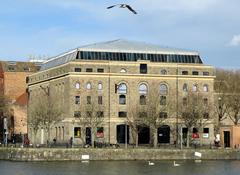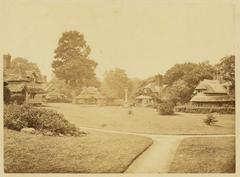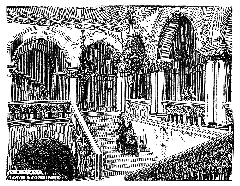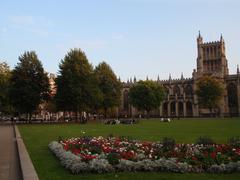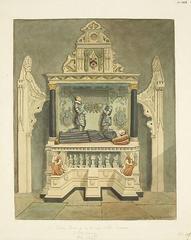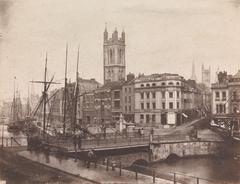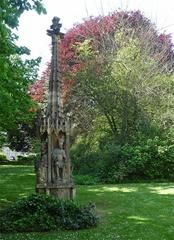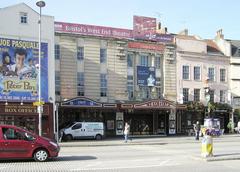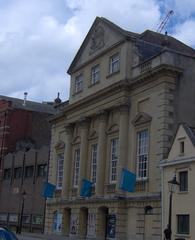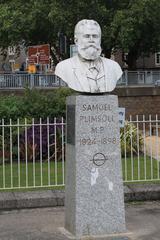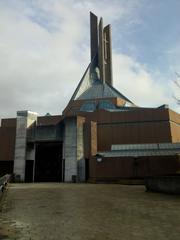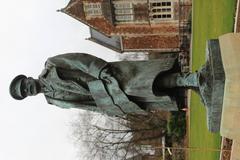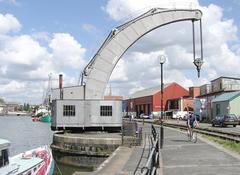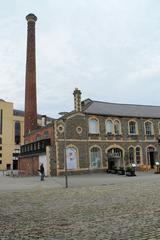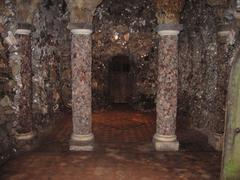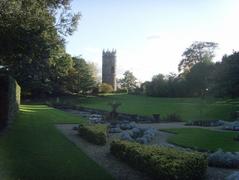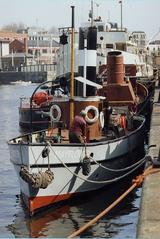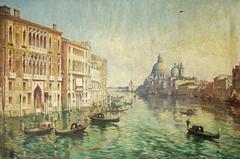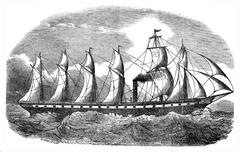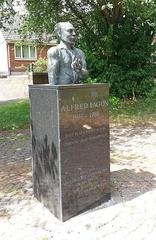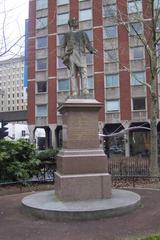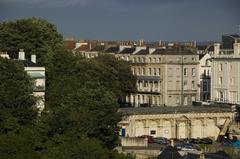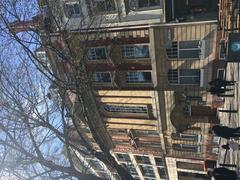South African War Memorial Bristol: Visiting Hours, Tickets, and Travel Guide
Date: 14/06/2025
Introduction
The South African War Memorial in Bristol stands as a profound testament to the courage and sacrifice of those who served during the Second Boer War (1899–1902) and, more broadly, South African soldiers involved in both World Wars. Located in prominent public spaces such as Clifton Down and near Arnos Vale Cemetery, the memorial not only honors the Gloucestershire Regiment and other imperial forces but also reflects Bristol’s historical ties to British imperial military history and its commitment to inclusive remembrance. This guide provides a comprehensive overview of the memorial’s history, design, visitor information, and tips for making the most of your visit. Whether you’re a history enthusiast, a local resident, or a tourist, discover how this site connects Bristol’s local heritage to broader global events. For in-depth resources, see SA War Memorials & After and Bristol Museums.
Contents
- Introduction
- Historical Background: War, Memorial, and Design
- Military Significance of the South African War
- Visiting Information: Hours, Access, and Directions
- Guided Tours and Educational Resources
- The Memorial’s Role in Public Memory
- Visuals and Media
- Frequently Asked Questions (FAQs)
- Conclusion
- Sources
Historical Background
The Second Boer War: Origins and Legacy
The Second Boer War (1899–1902) was fought between the British Empire and the Boer republics of South Africa, rooted in imperial competition and the discovery of gold in the Transvaal. This conflict saw the involvement of soldiers from Britain and across its colonies, including Australia, Canada, New Zealand, and South Africa (SA War Memorials & After). The war introduced new military tactics—such as guerrilla warfare and scorched earth policies—and led to significant humanitarian crises, notably the use of concentration camps. With over 22,000 British military deaths, mostly from disease, the war left a lasting impact on both South Africa and the UK.
Bristol’s Role and the Genesis of the Memorial
Bristol, as a key British port and industrial hub, played an active role in supporting the war through volunteers and resources. The South African War Memorial was erected by public subscription, reflecting a broader trend of communities across Britain memorializing the sacrifices of local soldiers (Learn About War Memorials). The focus shifted from commemorating only leaders to honoring ordinary soldiers, marking an important evolution in public remembrance.
Design and Symbolism
Sculpted by Onslow Whiting, the memorial features a life-sized bronze infantryman of the Gloucestershire Regiment, standing alert with a rifle in hand and reaching for a cartridge. This realistic portrayal emphasizes readiness, vigilance, and the collective sacrifice of the regiment’s men (Roll of Honour). The statue is mounted on a substantial granite plinth, symbolizing permanence and resilience. Inscriptions and a regimental badge provide personal and local significance, while the names of 251 fallen soldiers are etched onto the monument.
Military Significance
The South African War was notable for its use of guerrilla tactics by Boer commandos, British blockhouse systems, and controversial policies such as the internment of civilians in concentration camps (SA War Memorials & After). The conflict marked the first major overseas deployment of colonial troops and contributed to both imperial unity and the development of national identities in the Commonwealth (SA History Hub).
Visiting the South African War Memorial Bristol
Visiting Hours and Admission
- Hours: The memorial is outdoors and accessible year-round, with recommended visits during daylight (9:00 AM to 5:00 PM) for safety and visibility.
- Admission: Free of charge; no tickets required.
Location and Directions
- Address: The main memorial is on Queen’s Road, Clifton Down, centrally located near the Clifton Suspension Bridge and adjacent to Arnos Vale Cemetery.
- Transport: Easily reached by bus (routes 8 and 9 from Bristol Temple Meads), on foot, or by car (public parking available at Clifton Down Shopping Centre).
- Accessibility: Level, paved pathways and ramps ensure wheelchair access. Pedestrian crossings are available, but assistance may be needed to access the memorial safely on the road island.
Facilities and Nearby Attractions
- On Site: The memorial is surrounded by landscaped gardens and benches. Informational plaques provide historical context.
- Nearby Facilities: Cafés, restaurants, and public toilets are available in Clifton Village. The Clifton Suspension Bridge Visitor Centre and Clifton Observatory are within walking distance (Visit Bristol: Clifton).
- Other Attractions: Arnos Vale Cemetery, Bristol Museum & Art Gallery, M Shed Museum, and Bristol Cathedral.
Best Times to Visit
- Events: Remembrance Sunday in November, Armistice Day, and South Africa’s Freedom Day on April 27th feature commemorative ceremonies.
- Seasons: Spring and summer offer the best weather and extended daylight hours. Weekday mornings are quieter.
Guided Tours and Educational Opportunities
- Tours: While not regularly scheduled, guided tours are sometimes offered during commemorative events by local heritage groups and the Commonwealth War Graves Commission (Commonwealth War Graves Commission). These tours provide insights into South Africa’s role in the wars and the wider Commonwealth contribution.
- Educational Resources: Online materials and virtual tours are available through SA War Memorials & After and Bristol Museums.
The Memorial’s Role in Public Memory
The South African War Memorial exemplifies the evolution of commemorative practices, focusing on the sacrifices of ordinary soldiers and their regiments. It remains a focal point for annual remembrance events and ongoing public education. The memorial has also become a site for addressing historical injustices, particularly the under-recognition of Black South African and other non-European soldiers—an issue being redressed both in Bristol and internationally (IPS News).
Visuals and Media
- Images: Photographs of the memorial, including close-ups of the bronze soldier, inscriptions, and regimental badge, enhance visitor engagement. Use descriptive alt text such as “South African War Memorial Bristol soldier statue” for accessibility and SEO.
- Maps: Interactive maps are available online or at local tourist centers, highlighting the memorial’s location and nearby attractions.
- Virtual Tours: Check museum and heritage websites for digital resources and archival photographs.
Frequently Asked Questions (FAQs)
Q: What are the visiting hours?
A: The memorial is outdoors and accessible 24/7, but daytime visits (9:00 AM to 5:00 PM) are recommended.
Q: Is there an entry fee or ticket required?
A: No, the memorial is free to visit.
Q: Is the memorial accessible for wheelchair users?
A: Yes, with level pathways and ramps, though assistance may be needed to cross to the road island location.
Q: Are guided tours available?
A: Occasionally, especially during commemorative events. Check with local heritage groups or Commonwealth War Graves Commission.
Q: What other historical sites are nearby?
A: Arnos Vale Cemetery, Clifton Suspension Bridge, Bristol Museum & Art Gallery, and M Shed Museum.
Visitor Etiquette and Practical Tips
- Maintain a respectful demeanor—keep noise to a minimum, refrain from climbing on the monument, and dispose of litter properly.
- Photography is welcome; be mindful during ceremonies. Drone use requires prior permission.
- Wear suitable clothing for Bristol’s variable weather, and consider public transport to ease parking challenges.
- Check local listings for commemorative events (Armed Forces Day Events), and contact Visit Bristol for accessibility requests.
Summary and Visitor Tips
The South African War Memorial in Bristol is a significant landmark that bridges local, national, and imperial histories through its commemoration of sacrifice and service. It stands as a symbol of duty, remembrance, and evolving public memory—accessible year-round and free for all. Its proximity to other major Bristol attractions ensures a rich, multifaceted experience for visitors. Ongoing efforts to recognize the contributions of previously overlooked groups, including Black South African soldiers, continue to shape the memorial’s relevance today.
Sources and Official Links
- SA War Memorials & After
- Roll of Honour
- Bristol Museums
- Visit Bristol
- Veterans Affairs Canada
- Commonwealth War Graves Commission
- Total Military Insight
- IPS News
- Armed Forces Day Events
